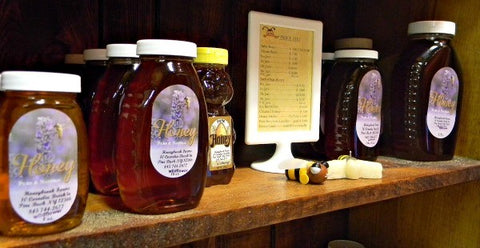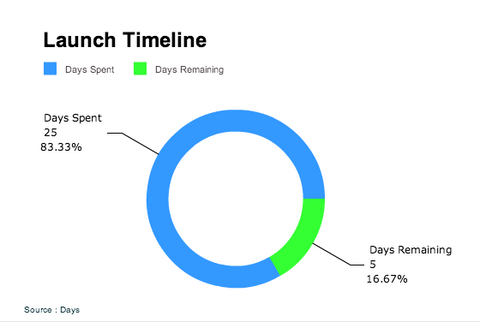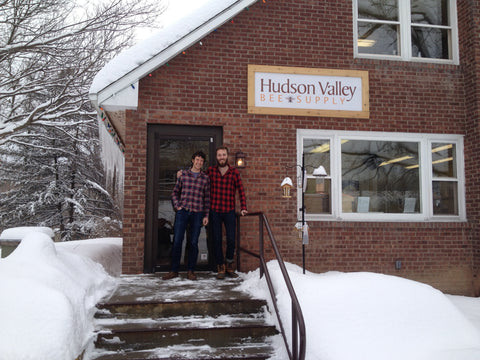One Startup. 30 Days. No Secrets. Start at the beginning.
Aside from some reading and brief online research, we know next to nothing about our key ingredient, honey. Naturally, the next stop on our blizzard-covered honey hunt was to say hi to the founders of Hudson Valley Bee Supply who were our invaluable connection to several beekeepers in the area.
One of the biggest lessons Morgen and I have learned in launching this brand is that you have to take the help that others can offer. We have passion and drive and smarts, but there are others who can step in with real expertise in areas where we falter. We’ve been extremely lucky to be surrounded with people who are excited by our project and have offered a hand exactly when we needed them.
Megan and Jorik, long-time beekeepers and founders of Hudson Valley Bee Supply, are connected to the beekeeping community in a major way. They opened Hudson Valley Bee Supply just over a year ago as a central place for beekeeping supplies, resources, support, and classes. Almost overnight, their business exploded and as Megan said, “We’ve been white knuckled every day trying to keep up. I come home at the end of the day, and there are just no words left except ‘sit’ and ‘wine’.”

What was intended to be a quick hello and thank you turned into nearly 90 minutes of conversation and a crash-course education. Within minutes of meeting, Jorik asked me if I had thought about bottling. I had not given it much thought beyond a strainer and a funnel, so Jorik whisked me off to their backroom to show me buckets with a variety of spigots. Suddenly, I had a million questions that I hadn’t considered before and he was extremely patient as my brain started to acclimate to the mysterious world of honey.
We’re using pure honey that is raw, unfiltered, and untreated, which means it has some particularities not typical of store bought honey. A lot of comb, wax, and air are trapped in the weight of the honey, so buckets of poured honey need to sit in a warm place to allow the bubbles and debris to rise to the top. The buckets he gave us have spigots at the bottom so that I’m only drawing the cleanest and purest of the honey from the bottom. He also taught me how to gradate the release and use the viscosity of the honey for everything from a glugging pour to a fine stream. With a little practice, I’ll be able to bottle the honey into a small bottle top without a funnel. And since we’re buying our honey in large quantities, he gave me a crash course in reconstituting crystallized honey so that our last bottle is as consistent and pourable as the first bottle.
Something Megan and Jorik kept mentioning was how small the honey community is, but that the people in it are extremely passionate about their product and compassionate towards their peers. They’ve seen such an incredible shift in the awareness of honey bees and honey production as information becomes more available on the plight of the honeybee.
Not wanting to be late, we said our goodbyes and promised to send thank you bottles of our finished product their way next week. Twisting through the snowy back roads, we finally found the small sign for Honeybrook Farms and pulled up in front of a small garage. Todd’s wife, Wenche, came down from the house to meet us and show us their supply room. Wenche is a beautiful Scandinavian woman by way of Bay Ridge, with the remnants of a Brooklyn accent to prove it.

Photo Source: Examiner
She let us sample a couple varieties of their honey and she and I discussed the merits of the fall harvest versus spring harvest. Completely different in color, taste, and texture, the spring is by far my preference. Lucky for us, Todd and Wenche’s rotation seems to be on the opposite schedule of Larry’s so we can source our spring variety year round. If Bees Knees takes off enough that we’ll need several hundred pounds of honey a month, we’ll eventually buy out an entire hive for the season and keep the spring honey in stock.
Right before we left, Wenche dropped a piece of advice that never would have occurred to me: “Never wash your buckets with soap. Honey is extremely porous. If you use soap, your honey will taste like soap.” Whew! Since honey is antiseptic and doesn’t spoil, a rinse with hot water is all a bucket needs before it’s ready for the next five gallons.
On the drive up, we worried that we were underutilizing our day by only meeting with two beekeepers and one supply store. As it turned out those three meetings not only fulfilled all our needs, but were all we could fit in a day. The pace of business in the Hudson Valley is entirely different than in the city; an hour or two of conversation precedes the transaction and even that can get derailed by another twenty minutes of chat.
What struck me the most about everyone we met yesterday was the palpable energy each person projected when they spoke about honey. These people care about their work, they care about their environment, and they care about educating outsiders. Building a brand has been enormously exciting, but becoming part of this community outstrips it all.

Source: iCharts




